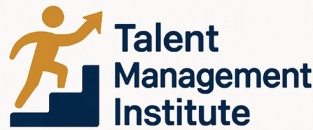
Understanding Pay Equity in Talent Management
Grasping the Key Concepts of Pay Equity
Understanding pay equity is essential in the realm of talent management. It revolves around the principle that individuals performing the same work should receive equal pay, taking into account factors such as experience, education, and role responsibilities. This concept is fundamental to fostering a fair workplace environment. Pay equity addresses disparities and gaps, whether they stem from gender, race, or other attributes. Organizations use compensation data and software to conduct equity audits to ensure pay practices are aligned with this principle. This ensures compliance with fair pay standards and supports the movement towards eliminating pay gaps.The Significance of Equity Platforms and Tools
Equity platforms and tools play a pivotal role in real-time analysis of compensation data. By utilizing these tools, companies can identify pay disparities and take proactive steps to address pay inequities. These systems offer comprehensive reporting capabilities, enabling management to understand where pay equity still needs improvement. Adopting an equity platform involves software that not only aids in equity analysis but also facilitates transparent reporting. This is particularly beneficial for global organizations striving for fair pay across diverse employee groups. If you're interested in learning more about diversity practices and their place in talent management, consider exploring the importance of a diversity and inclusion calendar to complement your pay equity initiatives. Pay equity isn't just about numbers; it's about cultivating an environment where fair compensation practices are the norm. By understanding these elements, organizations can make strides toward a more equitable workplace.The Role of Pay Equity Tools
Gaining the Upper Hand with Compensation Software
Pay equity tools are instrumental in addressing disparities across organizations, ensuring that compensation practices align with the principles of equal pay. By leveraging equity software, businesses can perform a comprehensive equity analysis, identifying pay disparities and gaps that may exist among employees. This level of data-driven insight is crucial for effective talent management. Through real-time compensation data analysis, these tools enable organizations to conduct thorough equity audits, helping to illuminate any gender or race-based pay gaps. These audits form the backbone of fair pay practices and are central to achieving compliance with various pay transparency regulations. Moreover, such tools not only assist in identifying issues but also provide actionable insights to rectify them. By integrating data into a unified platform, organizations can streamline their compensation management processes, ensuring that each decision contributes to a more equitable work environment. When equity tools are effectively utilized, they lay the foundation for an open dialogue regarding compensation, fostering a culture of transparency. Employees benefit from the clarity surrounding salary determinations, which, in turn, enhances trust and engagement within the workforce. This strategic approach to addressing pay gaps ensures that pay equity is maintained in real time, supporting broader organizational goals. To delve deeper into understanding how these dynamics influence talent management, the dynamics of unregretted attrition in talent management provide pertinent insights into maintaining a harmonious workplace.Implementing a Pay Equity Tool: Key Steps
Steps to Implementing an Effective Pay Equity Strategy
Embarking on the journey towards fair pay practices through the implementation of a pay equity tool can be a transformational move for organizations. To ensure a successful and compliant transition, it is essential to follow a strategic roadmap. This involves various stages from initial data collection to continuous monitoring, each playing a crucial role in closing pay gaps and achieving pay transparency.
Comprehensive Data Collection and Analysis
The first step in implementing an effective pay equity platform involves a thorough equity analysis. Organizations need to gather accurate compensation data that includes salaries, bonuses, and benefits across all employee levels. This data must be meticulously analyzed for any pay disparities based on parameters such as gender, race, and other demographic factors.
Utilizing Advanced Software Tools
Leveraging advanced equity software and tools can greatly enhance the accuracy of this analysis. These tools can help identify hidden pay gaps and ensure compliance with both local and global standards. By integrating cutting-edge tech like real-time reporting, organizations can maintain a dynamic view of their compensation structures.
Developing a Strategic Roadmap
Once disparities have been identified through a detailed equity audit, the next step is to construct a strategic plan that addresses these inequities. This includes revising current compensation practices, establishing clear policies on equal pay, and setting achievable goals for reducing pay disparities. Flexibility and scalability are key factors to consider at this stage, especially for organizations with a global workforce.
Conducting Equity Audits
Regular equity audits are vital for sustaining fairness in compensation. These audits provide an opportunity to review past actions and measure progress towards fair pay. They are instrumental in ensuring that no new pay equity issues arise and confirm that all initiatives are in alignment with organizational goals.
Creating a Culture of Pay Transparency
Finally, fostering a culture of pay transparency can strengthen trust and credibility within the workforce. Encouraging open discussions about pay and compensation structures can demystify organizational pay practices, empower employees, and drive commitment to achieving total pay equity.
For those in pursuit of a thorough understanding of evolving talent management dynamics, insights into innovative approaches can be explored in this resource.
Challenges in Achieving Pay Equity
Navigating the Hurdles to Achieving Pay Equity
Ensuring fair compensation through pay equity initiatives is a noble goal, yet it is rife with challenges. For organizations striving to achieve true pay equity, several obstacles stand in the way of their aspirations.
One significant challenge is the availability and quality of compensation data. Data accuracy is crucial for identifying pay disparities and gaps, but inconsistencies in how data is collected and reported can impede equity analysis efforts. Organizations must strive for comprehensive data analysis processes, using advanced equity software to ensure they have reliable and real-time insights.
Another hurdle is the intricacy of integrating equity tools within existing pay practices. This requires a delicate balance between maintaining existing compensation structures and introducing new policies that support pay transparency. Engagements in equity audits and implementing equity platforms can help bridge this gap, but also demand time and resources from management teams.
Compliance with laws and regulations on equal pay is an additional layer of complexity. Different regions may have varying standards and requirements, posing a challenge in global operations for ensuring compliance in all jurisdictions.
Moreover, addressing the deeply rooted gender pay and race disparities requires a cultural shift within an organization. This extends beyond mere data analysis and necessitates a commitment to continuous education and awareness of pay disparities.
Overcoming these challenges demands organizational commitment and strategic use of technology, which can expedite compliance and transparency in compensation practices.













